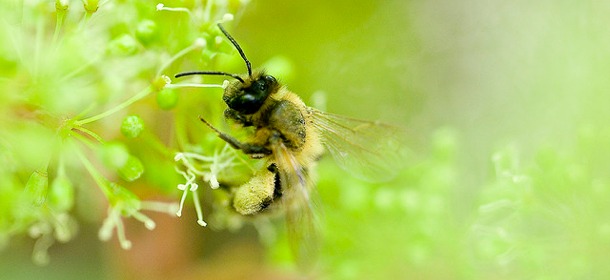Diseases/Conditions
Cancer: The Hostile Environment Making Cells Go Rogue (Part 2)

Hyperoxidation of Cell Leading to Cell Death, by the Journal of Cellular Biology, Creative Commons Attribution-Noncommercial-Share Alike 3.0 Unported License
This is a continuation of Cancer: Rogue Cells Strike Out on Their Own to Survive in a Hostile Environment, which discusses the probable cause of cancer, the reasons previous theories of cancer’s cause simply make no sense, and the essence of the why cancer cells turn against their supporting organism. This article discusses what cancer cells do and why they do it, how that matches the ancient ocean environment where they evolved, and how holistic therapies are obviously the only realistic approach to curing cancer.
Cancer and Its Environment
Of course, survival for the individual cancerous cells is ultimately at the cost of the organism’s survival. This, though, may not be the extreme price that it appears to be. It isn’t until the cell’s existence is already threatened that it becomes cancerous. Precancerous cells aren’t able to continue their symbiotic roles in supporting the body anyway. The rest of the organism isn’t keeping its part of the symbiotic bargain. Thus, from the cell’s point of view, there is nothing to lose by unleashing the ancient programming.
Acidity
The oncogene/cancer program evolved in a different environment, that of a primitive sea. Later, plant life spread on land. It sequestered carbon, pulling it from the air and, indirectly, the ocean, making it less acidic. Before then, the sea that harbored the first multicellular life was most likely highly acidic. That may explain why cancer prefers an acidic environment.
Oxygen
Cellular energy is usually produced through a process that requires oxygen. Cancer cells, though, don’t utilize the same process. They use glycolysis, which converts glucose (sugar) to energy and requires no oxygen. This should not be too surprising, since it’s believed that the ancient ocean that gave rise to the first multicellular life was held little oxygen. Glycolysis also produces the acidic environment preferred by cancer.
Cancer Cell Changes
The process of turning a normal cell into a cancer cell involves creating both an environment conducive to cancer and also changing the cell itself to fit that environment. To this end, oncogenes do several things:
-
Turn off apoptosis, programmed cell death initiated by age or signals from the environment.
- Turn off anoikis, which is similar to apoptosis but initiated by separation from normal surrounding cells. This is a requirement for metastasis by allowing cancer cells to detach and spread to other areas.
- Turn off aging by creating enzymes that repair telomeres, which normally shorten, signalling the approach of apoptosis.
- Change characteristics of viscosity and elasticity, which helps allow the cell to move, invade other areas of the body, and colonize it—the definition of metastasis.
- Remove surface receptors, which allows the cancer cell to evade the immune system.
- Cause the cell to secrete corrosive enzymes, which dissolve organ membranes, allowing cells to enter the blood and lymphatic circulatory systems. Cancer cells use them as highways to colonize other areas of the body—to metastasize.
- Create their own cell division and growth factors, which makes the cancer cell independent of the body’s signals.
Oncogenes enable all these changes and more. There is nothing simplistic about cancer cells and colonies. It should be clear that the old mutation and viral explanations, other than as possible triggers, cannot possibly explain cancer.
The Holistic View of Cancer
In this theory of cancer, cells don’t adapt to help the organism survive. Normally in an organism, cells have given up their independence for the benefit of the whole. When cancer takes hold, the cells have staged a rebellion. They no longer act as part of a single organism. Instead, their goal is survival only of the themselves, the cancer. They forego the benefits of symbiosis, behaving instead as a particularly potent parasite. After all, having been part of their host, they know and manipulate it better than any invader.
While cancer is a survival technique, as symptoms are generally viewed in holistic healing, survival isn’t focused on the organism. Instead, the focus is on the cancer’s survival, even though it must mean the organism’s death. The primitive oncogene doesn’t know the difference between the ancient ocean environment and the body it inhabits.
Nonetheless, holistic methods should still hold the key to cancer therapies. Their focus is on the organism’s overall health and they strive to return it to health. Even though cancer breaks the rule of holistic systems by not being an attempt to heal the organism, it is still a survival attempt—and it happens because of underlying poor health that creates an environment within which the cells cannot survive.
Therefore, it’s fairly clear that the only way to heal cancer is by returning the body to health. Though cancer is the exception to the rule of a symptom being an attempt to heal, it signals more clearly than any other condition that the only way to approach healing is by focusing on overall health. It is, after all, the body’s environment that drives cells to cancerous mutiny.
Sources:
- (1)Cancer tumors as Metazoa 1.0: tapping genes of ancient ancestors, P. C. W. Davies and C. H. Lineweaver, doi:10.1088/1478-3975/8/1/015001
Tagged alternative medicine, cancer, cancer acidity, cancer cause, cancer cell changes, cancer environment, cancer glucose, cancer glycolysis, cancer oxygen, cancer sugar, conventional medicine, metastasis, modern medicine, oncogene, science



















Pingback: Cancer: Rogue Cells Strike Out on Their Own to Survive in a Hostile Environment | Gaia Health
Pingback: Cancer: Rogue Cells Strike Out on Their Own to Survive in a Hostile Environment | Next Level Nutrition